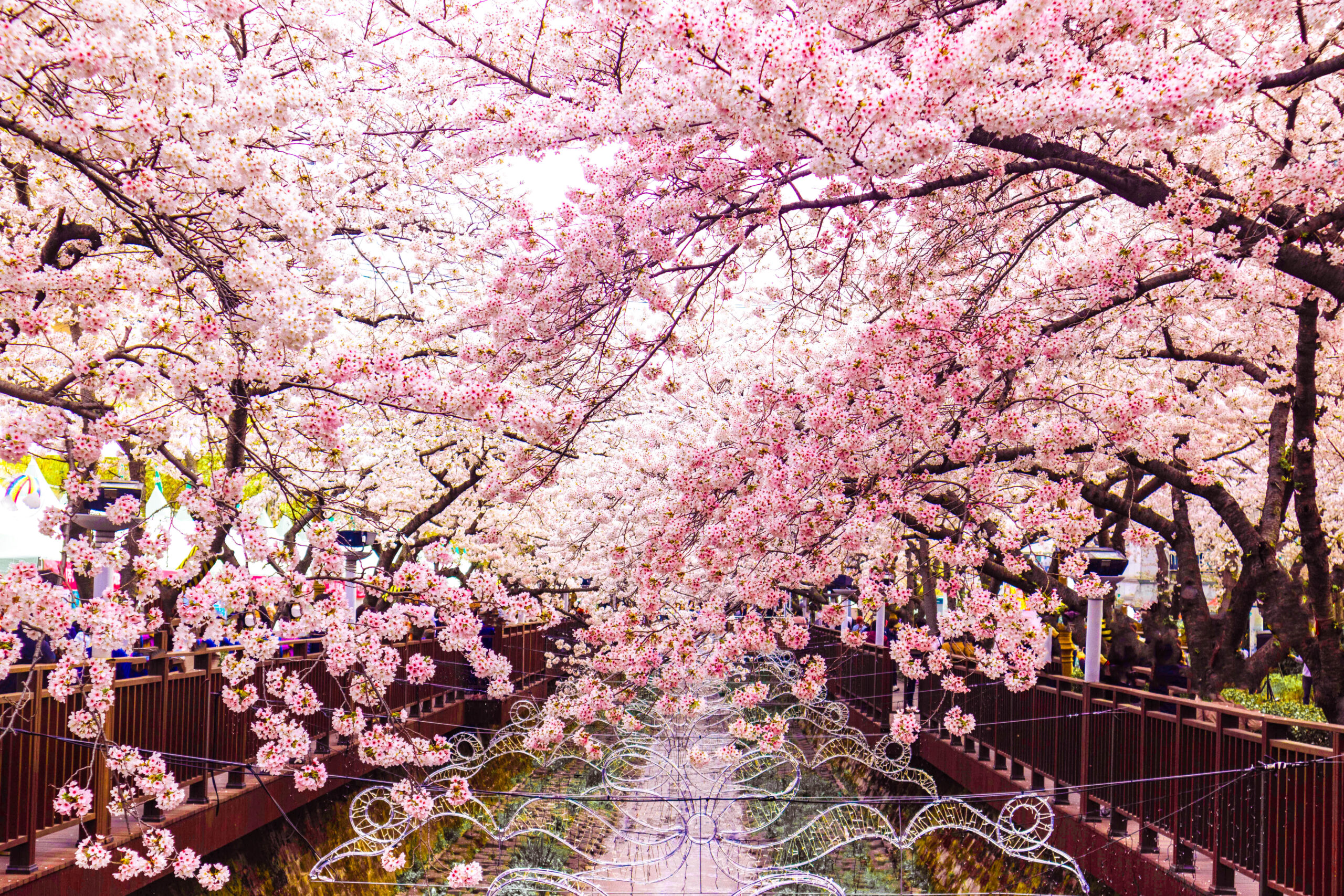Jinhae: Where Cherry Blossoms Paint the Spring Sky
Every spring, the coastal city of Jinhae in South Korea transforms into a pastel-hued wonderland, drawing millions of visitors to its iconic cherry blossom festivals. Renowned for its Jinhae Gunhangje Festival, this destination blends natural beauty with rich historical roots, originally established to honor Admiral Yi Sun-sin, a national hero. Beyond the fleeting beauty of its sakura blossoms, Jinhae offers a tapestry of cultural experiences, scenic landscapes, and community traditions that resonate deeply with both locals and travelers. This article explores the magic of Jinhae’s cherry blossom season, delving into its history, must-see locations, cultural significance, and the sustainable efforts preserving its charm. Prepare to discover why this ephemeral spectacle is more than just a visual feast—it’s a celebration of resilience and renewal.
The Legacy of the Jinhae Gunhangje Festival
Born in 1952 as a memorial for Admiral Yi Sun-sin, the festival has evolved from a local tribute into one of Korea’s largest spring events. The admiral’s connection to Jinhae—where he built naval bases—adds historical weight to the blossoms’ symbolism of hope. Over 350,000 cherry trees, many planted during Japanese colonial rule, now form a living monument to the city’s endurance. The festival’s parades, reenactments, and naval-themed exhibitions intertwine patriotism with nature’s cycles, creating a unique narrative that distinguishes Jinhae from other cherry blossom destinations.
Iconic Spots: Beyond the Blossoms
While cherry trees blanket the city, two locations stand out:
- Yeojwacheon Stream, immortalized in K-dramas, where blossoms arch over a 1.5 km walkway mirrored by tranquil waters.
- Gyeonghwa Station, a disused rail line transformed into a “flower tunnel,” where trains once sliced through cascades of petals.
Lesser-known gems like Jehwangsan Park offer panoramic views of blossom-covered hills meeting the ocean—a reminder of Jinhae’s strategic coastal identity.
Cultural Threads in Petal-Season Traditions
The festival thrives on community participation. Local artisans sell hanji (traditional paper) crafts inspired by blossoms, while street food stalls serve sakura-infused hoddeok (sweet pancakes). Nighttime illuminations at Anmingogae Hill blend technology and tradition, with LED lights highlighting blossoms against historical murals. Notably, the Naval Academy Opening Ceremony—a parade of cadets in historical uniforms—ties modern military pride to the admiral’s legacy, creating a living bridge between past and present.
Sustainability: Protecting the Pink Canopy
As overtourism threatens blossom ecosystems, Jinhae has implemented measures like:
- Limiting vehicle access to key areas during peak bloom
- Partnering with botanists to replace aging trees with disease-resistant varieties
- Promoting “seed paper” souvenirs that grow into native plants
These efforts aim to preserve both the blossoms and the local culture, ensuring future generations can witness spring’s delicate dance in Jinhae.
Conclusion: A Transient Beauty with Lasting Impact
Jinhae’s cherry blossoms are more than a seasonal attraction—they are a narrative of history, community, and ecological care. From the Admiral Yi-inspired festivals to the sustainable steps safeguarding its trees, the city exemplifies how natural wonders can foster cultural continuity. As petals fall to make way for new growth, visitors leave with more than photos; they carry an understanding of resilience etched in Jinhae’s DNA. Whether you seek poetic landscapes or a deeper connection to Korea’s heritage, this blossom-draped city reminds us that beauty, though fleeting, roots itself eternally in memory.
